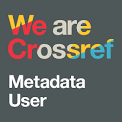The Use of Dilemma Story to Enhance Speaking Skill at Third Semester of IAI As’adiyah Sengkang
DOI:
https://doi.org/10.51574/ijrer.v1i2.335Keywords:
Dilemma Story, Speaking Skill, StudentsAbstract
The goal of this study is to see if using dilemma stories as a teaching tool can help students improve their speaking abilities. The third semester of IAI As'adiyah Sengkang was involved in this study, which employed a descriptive-quantitative method. Interviews were used to acquire data, which were subsequently documented and examined qualitatively. The adoption of the dilemma tale approach can increase students' speaking abilities in the third semester of IAI As'adiyah Sengkang, according to data analysis. The statistical analysis shows that the mean score of the student's accuracy in the pretest (2.45) is lower than in the post-test (3.3), that the mean score of the student's fluency in the pretest (2.4) is lower than in the post-test (3.45), and that the mean score of the student's comprehensibility in the pretest (2.9) is lower than in the post-test (3.3). (3.8). The table reveals that the significant difference between the pre-test and post-test results of the student's speaking ability is higher (10.76) than the inferential statistical analysis shows (1.729).
References
Abdelmageed, M., & El-Naggar, Z. (2018). Digital storytelling enhances students' speaking skills at Zewail university of science and technology in Egypt. In Society for Information Technology & Teacher Education International Conference (pp. 278-287). Association for the Advancement of Computing in Education (AACE). https://www.learntechlib.org/primary/p/182537/
Alharbi, H. A. (2015). Improving Students' English Speaking Proficiency in Saudi Public Schools. International journal of instruction, 8(1), 105-116. https://eric.ed.gov/?id=EJ1085263
Altbach, P., & de Wit, H. (2020). The dilemma of English. International Higher Education, (100), 28-30. https://ejournals.bc.edu/index.php/ihe/article/view/14233
Andi, K., & Arafah, B. (2017). Using needs analysis to develop English teaching materials in initial speaking skills for Indonesian college students of English. The Turkish Online Journal of Design, Art and Communication (TOJDAC), Special Edition, 6, 419-436.
Bloomfield, J., & Fisher, M. J. (2019). Quantitative research design. Journal of the Australasian Rehabilitation Nurses Association, 22(2), 27-30.
Burns, A., & Seidlhofer, B. (2019). Speaking and pronunciation. In An introduction to applied linguistics (pp. 240-258). Routledge.De Klerk, V. (2001). The cross-marriage language dilemma: His language or hers?. International Journal of Bilingual Education and Bilingualism, 4(3), 197-216. https://doi.org/10.1080/13670050108667728
Chien, S. Y., Hwang, G. J., & Jong, M. S. Y. (2020). Effects of peer assessment within the context of spherical video-based virtual reality on EFL students’ English-Speaking performance and learning perceptions. Computers & Education, 146, 103751. https://doi.org/10.1016/j.compedu.2019.103751
Copland, F., Garton, S., & Burns, A. (2014). Challenges in teaching English to young learners: Global perspectives and local realities. Tesol quarterly, 48(4), 738-762. https://doi.org/10.1002/tesq.148
Dimitrov, D. M. (2008). Quantitative research in education. New York, NY: Whittier.
Gallardo-Niacato, Y., Infante-Paredes, R., Suárez-Mosquera, W., & Chimbo-Cáceres, M. (2021, September). Online Stories from the Moth to Improve the Speaking Skill: Ambato Case. In International Conference on Interactive Collaborative Learning (pp. 303-310). Springer, Cham. https://doi.org/10.1007/978-3-030-93904-5_31
Gao, X., & Xu, H. (2014). The dilemma of being English language teachers: Interpreting teachers’ motivation to teach, and professional commitment in China’s hinterland regions. Language Teaching Research, 18(2), 152-168. https://doi.org/10.1177/1362168813505938
Gaskarth, J., & Langdon, N. (2021). The dilemma of Brexit: hard choices in the narrow context of British foreign policy traditions. British Politics, 16(2), 170-186. https://doi.org/10.1057/s41293-021-00166-8
Hava, K. (2021). Exploring the role of digital storytelling in student motivation and satisfaction in EFL education. Computer Assisted Language Learning, 34(7), 958-978. https://doi.org/10.1080/09588221.2019.1650071
Hino, N. (2009). The teaching of English as an international language in Japan: An answer to the dilemma of indigenous values and global needs in the Expanding Circle. AILA Review, 22(1), 103-119. https://doi.org/10.1075/aila.22.08hin
Januariza, Y., & Hendriani, S. (2016). Student’Anxiety In Learning Speaking. Proceedings of ISELT FBS Universitas Negeri Padang, 4(2), 468-474. http://ejournal.unp.ac.id/index.php/selt/article/view/7010
Kälvemark, S., Höglund, A. T., Hansson, M. G., Westerholm, P., & Arnetz, B. (2004). Living with conflicts-ethical dilemmas and moral distress in the health care system. Social science & medicine, 58(6), 1075-1084. https://doi.org/10.1016/S0277-9536(03)00279-X
Kameniar, B. M. (2007). Dilemmas in Providing Hospitality to Others in the Classroom: A Story of One Christian Religious Education Teacher. TCI (Transnational Curriculum Inquiry), 4(3), 1-11. https://doi.org/10.14288/tci.v4i3.31
Karnieli-Miller, O., Michael, K., Gothelf, A. B., Palombo, M., & Meitar, D. (2021). The associations between reflective ability and communication skills among medical students. Patient education and counseling, 104(1), 92-98. https://doi.org/10.1016/j.pec.2020.06.028
Karpovich, I., Sheredekina, O., Krepkaia, T., & Voronova, L. (2021). The Use of Monologue Speaking Tasks to Improve First-Year Students’ English-Speaking Skills. Education Sciences, 11(6), 298. https://doi.org/10.3390/educsci11060298
Kayi, H. (2006). Teaching speaking: Activities to promote speaking in a second language. The internet TESL journal, 12(11), 1-6.
Keast, S., & Marangio, K. (2015). Values and knowledge education (VaKE) in teacher education: Benefits for science pre-service teachers when using dilemma stories. Procedia-Social and Behavioral Sciences, 167, 198-203. https://doi.org/10.1016/j.sbspro.2014.12.662
Kim, D., & Li, M. (2021). Digital storytelling: Facilitating learning and identity development. Journal of Computers in Education, 8(1), 33-61. https://doi.org/10.1007/s40692-020-00170-9
Kramsch, C. (2014). Teaching foreign languages in an era of globalization: Introduction. The modern language journal, 98(1), 296-311. https://doi.org/10.1111/j.1540-4781.2014.12057.x
Kurth, L. A., Anderson, C. W., & Palincsar, A. S. (2002). The case of Carla: Dilemmas of helping all students to understand science. Science Education, 86(3), 287-313. https://doi.org/10.1002/sce.10009
Lai, H. Y. T. (2008). English as an international language? Taiwanese university teachers' dilemma and struggle…. English Today, 24(3), 39-45. https://doi.org/10.1017/S0266078408000278
Matsumoto, Y. (2011). Successful ELF communications and implications for ELT: Sequential analysis of ELF pronunciation negotiation strategies. The Modern Language Journal, 95(1), 97-114. https://doi.org/10.1111/j.1540-4781.2011.01172.x
Mercer, S. (2018). Psychology for language learning: Spare a thought for the teacher. Language Teaching, 51(4), 504-525. https://doi.org/10.1017/S0261444817000258
Musa, M. K., & Ismail, R. (2021). Low proficiency students: can we help them to speak confidently?. Journal of English Language Teaching Innovations and Materials (Jeltim), 3(1), 1-14. http://dx.doi.org/10.26418/jeltim.v3i1.34964
Punch, S., & Rogers, A. (2021). Building, not burning bridges in research: Insider/outsider dilemmas and engaging with the bridge community. Journal of Leisure Research, 1-18. https://doi.org/10.1080/00222216.2021.1887782
Richards, J. C., & Schmidt, R. W. (2013). Longman dictionary of language teaching and applied linguistics. Routledge.
Rifkin, B. (2000). Revisiting beliefs about Foreign language learning 1. Foreign Language Annals, 33(4), 394-408. https://doi.org/10.1111/j.1944-9720.2000.tb00621.x
Sadik, A. (2008). Digital storytelling: A meaningful technology-integrated approach for engaged student learning. Educational technology research and development, 56(4), 487-506. https://doi.org/10.1007/s11423-008-9091-8
Sadiku, L. M. (2015). The importance of four skills reading, speaking, writing, listening in a lesson hour. European Journal of Language and Literature, 1(1), 29-31. https://doi.org/10.26417/ejls.v1i1.p29-31
Sawir, E., Marginson, S., Forbes-Mewett, H., Nyland, C., & Ramia, G. (2012). International student security and English language proficiency. Journal of Studies in International Education, 16(5), 434-454. https://doi.org/10.1177/1028315311435418
Schneider, J. (2018). Marching forward, marching in circles: A history of problems and dilemmas in teacher preparation. Journal of Teacher Education, 69(4), 330-340. https://doi.org/10.1177/0022487117742904
Sert, N. (2008). The language of instruction dilemma in the Turkish context. System, 36(2), 156-171. https://doi.org/10.1016/j.system.2007.11.006
Settelmaier, E. (2002). Dilemma stories as a way of addressing ethical issues in the context of science education: An evoluation. In Proceedings Western Australian Institute for Educational Research Forum 2002. https://www.waier.org.au/forums/2002/settelmaier.html
Shapira-Lishchinsky, O. (2011). Teachers’ critical incidents: Ethical dilemmas in teaching practice. Teaching and teacher education, 27(3), 648-656. https://doi.org/10.1016/j.tate.2010.11.003
Sudarmo, S. (2021). The importance of speaking in English as a foreign language between skillful and thoughtful competencies: studying sociolinguistics perspectives. Linguistics and Culture Review, 5(S1), 113-124. https://doi.org/10.21744/lingcure.v5nS1.1321
Suyitno, I., Fawzi, A., Susanto, G., Anggari, P. D., & Arista, H. D. (2019). Designing Indonesian learning materials for communicative purposes for foreign learners. International Journal of Learning, Teaching and Educational Research, 18(10), 112-127.
Taylor, E. L., Taylor, P. C., & Chow, M. (2013). Diverse, disengaged and reactive: A teacher’s adaptation of ethical dilemma story pedagogy as a strategy to re-engage learners in education for sustainability. Science Education for Diversity (pp. 97-117). Springer, Dordrecht. https://doi.org/10.1007/978-94-007-4563-6_6
Taylor, E., Taylor, P. C., & Hill, J. (2019). Ethical dilemma story pedagogy—a constructivist approach to values learning and ethical understanding. In Empowering science and mathematics for global competitiveness (pp. 118-124). CRC Press.
Unsworth, L., & Mills, K. A. (2020). English language teaching of attitude and emotion in digital multimodal composition. Journal of Second Language Writing, 47, 100712. https://doi.org/10.1016/j.jslw.2020.100712
Wallace, J. W., & Loudon, W. (Eds.). (2000). Dilemmas of science teaching. RoutledgeFalmer.
Yang, Y. T. C., Chen, Y. C., & Hung, H. T. (2020). Digital storytelling as an interdisciplinary project to improve students’ English speaking and creative thinking. Computer Assisted Language Learning, 1-23. https://doi.org/10.1080/09588221.2020.1750431









1.png)













